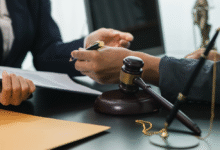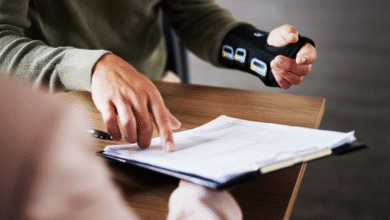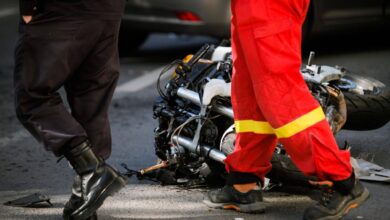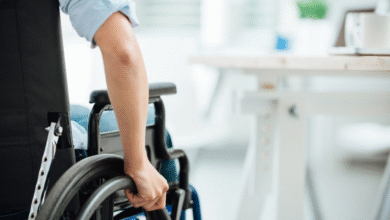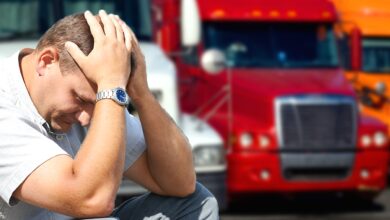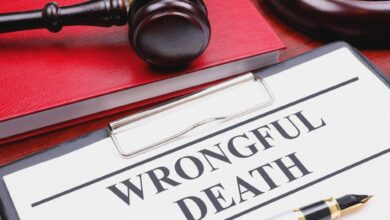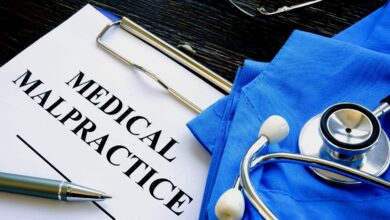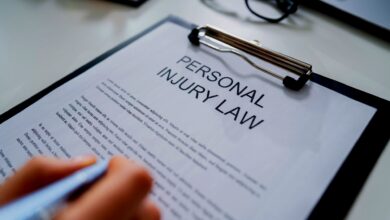Understanding the Causes and Consequences of Bicycle Accidents

Did you know that in 2021 alone, Louisiana recorded 35 bicycle fatalities and 504 bicycle injuries? The state’s average per capita bicyclist fatality rate is reportedly 3.8 per 1 million residents, making Louisiana rank second on the list of the deadliest states for bicyclists.
There’s no denying that bicycling is a popular and eco-friendly mode of transportation that many people enjoy worldwide. It enhances physical fitness, reduces traffic congestion, and minimizes environmental footprint. More interestingly, it’s a significantly cheaper way to navigate the state.
However, like any other mode of transportation, bicycling comes with its own set of risks, which can sometimes be severe.
Since bicycle accidents are a common occurrence, it becomes pertinent to explore their causes and consequences to improve safety and minimize the frequency of these incidents.
Read More: What to Do If You’re Injured in a Bicycle Accident
Causes of Bicycle Accidents
1. Motor Vehicle Collisions: One of the leading causes of bicycle accidents is collisions with motor vehicles. These accidents often result from drivers failing to notice cyclists or failing to yield the right of way when they are supposed to.
Also, distracted driving, speeding, and impaired driving are significant contributors to these collisions. If you were involved in a bike accident that was a result of the negligence of the car driver, get the help you need from Laborde Earles to enable you to receive the compensation that you deserve. This process is known as a personal injury lawsuit.
Bike accidents from motor vehicle collisions can result in injuries of various degrees. You want to make sure you aren’t left to deal with the emotional, physical, and financial burden resulting from someone else’s negligence.
2. Intersection Conflicts: Intersections can be danger zones for cyclists. A good number of accidents occur when cyclists and vehicles intersect at crossroads, especially when drivers make turns without properly checking for cyclists.
When motors and bikes fail to adhere to the rules of transportation at intersections, the tendency for a collision becomes high, particularly for left-turning vehicles.
3. Dooring Accidents: This occurs when a parked vehicle’s occupant opens a car door without checking for approaching cyclists. This sudden obstacle can lead to severe injuries or even fatalities, particularly if the bike is on speed.
4. Infrastructure Deficiencies: According to data from the National Highway Traffic Safety Administration (NHTSA), road surface-related issues, including potholes, cracks, and debris, contribute to a significant portion of bicycle accidents in the United States.
5. Riding Against Traffic: Every road user must follow the rules of the road, including traffic rules. Cyclists who ride against the flow of traffic are at a higher risk of accidents as they cause confusion in the minds of motorists and become even less visible
6. Impaired Driving/ Riding: Just as impaired driving is dangerous, impaired driving can lead to accidents. Motorists driving under the influence of alcohol can inflict severe damage on others, especially bikers.
At the same time, cycling under the influence of alcohol or drugs can impair a cyclist’s judgment and reaction time, putting them at risk of accidents.
7. Inadequate Lighting and Visibility: Low visibility conditions, such as nighttime riding without proper lights and reflective gear or due to weather conditions, can increase the likelihood of accidents. Drivers may struggle to see cyclists in such situations. Hence, bikers and motorists should be careful when using the road at such times.
8. Distracted Cycling: Just as distracted driving can cause accidents, distracted cycling can lead to the same end. Cyclists who distract themselves with mobile phones, headphones, or other devices can also contribute to accidents.
These devices distract them, so they aren’t aware of any potential danger or warning, thereby becoming victims of accidents.
Consequences of Bicycle Accidents
1. Physical Injuries: Bicycling was responsible for 185 pedestrian fatalities and 1,146 pedestrian injuries in Louisiana in 2021. Injuries from bicycle accidents may include:
- Cuts and bruises
- Leg, knee, or foot fractures
- Concussions or other head injuries
- Spinal cord injuries
- Wrongful death
- Facial or dental injuries
These injuries can lead to long-term health complications and disabilities, which may affect every other aspect of a person’s life.
2. Emotional Trauma: Beyond physical injuries, bicycle accidents can cause emotional trauma. Victims may experience post-traumatic stress disorder (PTSD), anxiety, and depression, affecting their overall well-being.
3. Financial Burden: Medical bills, rehabilitation costs, and property damage can significantly burden cyclists involved in accidents. Many victims face financial hardships as a result, as they often cannot work and earn during the recovery period.
4. Loss of Productivity: Injuries sustained in bicycle accidents can lead to a loss of productivity, as victims may be unable to work or perform daily tasks for an extended period. This can impact their quality of life and financial stability.
5. Impact on Family and Relationships: Bicycle accidents don’t just affect the victim but also their family and relationships. Caregivers may need to provide support, and strained relationships can result from the emotional and financial stress of an accident.
6. Decreased Cycling Confidence: Statistically, many victims experience a decrease in their confidence to cycle again after a bicycle accident. The fear of another accident occurring prevents people from enjoying the physical and mental benefits of cycling.
Read More: 3 Common Defenses in Car Accident Claims
Preventative Measures
There are preventive measures that can be taken to mitigate the causes and consequences of bicycle accidents, including:
1. Safety Education: Promote bicycle safety education programs for motorists and cyclists to boost awareness and understanding of road-sharing rules and best practices.
2. Improved Infrastructure: More investment should be made in providing better cycling infrastructure, including designated bike lanes, bike-friendly intersections, and well-maintained roads to reduce accident risk.
3. Enforcement of Traffic Laws: Strict enforcement of traffic laws, including penalties for distracted driving and dooring incidents, can deter risky behavior.
4. Visibility: Cyclists should make themselves more visible by wearing reflective clothing, using lights at night, and ensuring their bicycles have reflectors.
5. Helmet and other accessories: Encourage the use of helmets, protective gear, and other accessories among cyclists to reduce the risk of head injuries and damage to joints in the event of an accident. Study shows that wearing a helmet can lower the risk of head injury by over 50%.
Final Thoughts
Understanding the causes and consequences of bicycle accidents plays a vital role in improving safety and preventing these incidents. In the event of an accident, bikers should rush to treat themselves, especially if it’s a severe case. Also, you should contact a bicycle accident lawyer as soon as possible to enable you to receive compensation for your injury and relieve some of the stress that comes with a bicycle accident.

